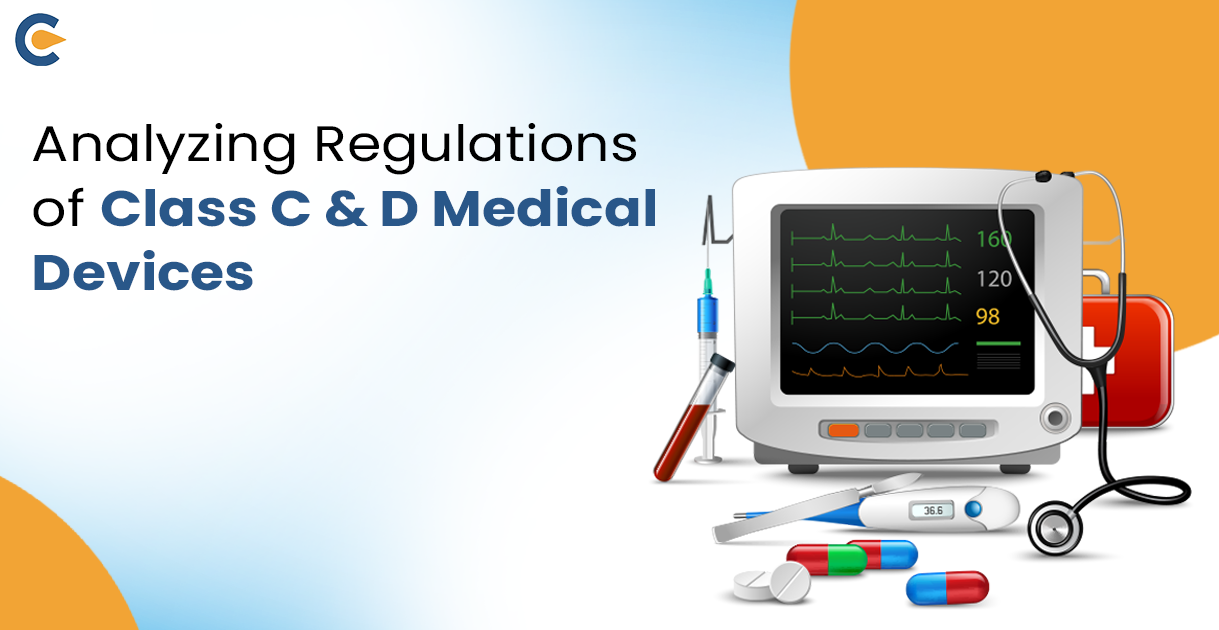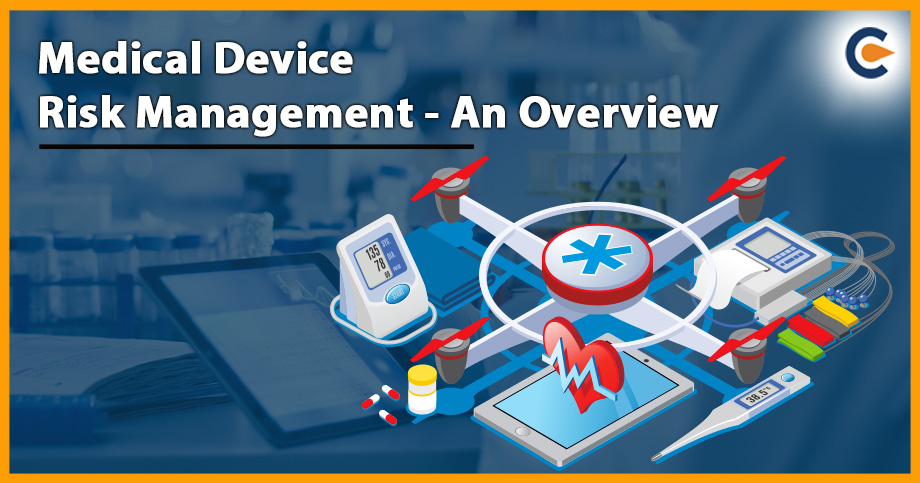The notification issued by the Ministry of Health & Family Welfare (MoHFW) on October 12, 2013, is regarding regulating all Class C & D Medical Devices. This notification will have effect from October 1, 2013, as per G.S.R. 102(E) dt 11.02.2020.
Medical Devices Classification based on the risk factor involved:
| CLASS A | CLASS B | CLASS C | CLASS D |
| Low Risk (Example – Alcohol Swabs) | Low Moderate Risk (Example – Thermometer) | Moderate-High Risk (Example – Implants) | High Risk (Example – Heart Valve) |
On February 11, 2020 outlining the regulations that the Drugs and Cosmetics Act, 1940 will apply to all medical devices. Phase-by-phase optimization of the regulatory procedure resulted in the licensing regime for Class A and Class B medical devices taking effect on October 1, 2022.
The Ministry of Health & Family Welfare released a notification on April 12, 2023, outlining the phased introduction of Class C and D medical devices, which would be subject to license beginning on October 1, 2023.
What does the Notification Say?
The Drugs and Cosmetics Act, 1940, subclause (iv) of clause (b) of Section 3 covers all medical devices. This notification, issued by the Ministry of Health & Family Welfare (MoHFW) on February 11, 2020, is effective as of April 1, 2020.
To govern all medical devices, MoHIFW released G.S.R. 102 (E) on February 11, 2020, which outlines the phased regulation of these devices. The aforementioned notice states that as of October 1, 2023, Class C and D medical devices would be subject to a licensing regime.
Meanwhile, this office has received comments from a number of associations and stakeholder groups asking that the business continuity not be interrupted by the licensing system for Class C & D Medical Devices that will go into effect on October 1, 2023.
Given the foregoing, it has been determined that should an importer or manufacturer who is currently importing or manufacturing any of the aforementioned Class C & D Medical Devicessubmit an application to the Central Licensing Authority for the granting of an import/manufacturing licence for the said device(s) as per the provisions of the Medical Devices Rules, 2017, the concerned application will be deemed valid and the importer/manufacturer may continue to import/manufacture the said device(s) for a period of six months from the date of this order’s issuance, or until the Central Licensing Authority makes a decision regarding the said application, whichever is sooner.
Explanation to October 12, 2013 Notification on Class C & D Medical Devices
An established producer or importer of Class C & D Medical Devices may continue to import or manufacture these devices for up to six months from the date this order is issued, according to a circular released by the Central Drugs Standard Control Organization (CDSCO). The date of this circular’s release was October 12, 2023.
Thus, in accordance with the circular, this extension is granted upon the satisfaction of the subsequent requirements:
- An application for a license to import or manufacture Class C & D Medical Deviceshas already been filed by the importer or manufacturer.
- This application was submitted to the Central Licensing Authority latest by September 30, 2023.
- These gadgets are already being imported or made by the importer or manufacturer.
- Therefore, the circular allows importers and producers to continue operating until April 12, 2024, or until their applications are decided, whichever comes first, provided the aforementioned requirements are met.
Recall that the Medical Devices (Amendment) Rules, 2020 issued by the Ministry of Health and Family Welfare on February 11, 2020. Except for the devices listed in the Annexure of the VIII Schedule of these rules, all medical devices notified as “Drugs” according to Section 3(b) of the Drugs and Cosmetics Act, 1940, must be registered with the Central Licensing Authority via a designated online portal created by the Central Drugs Standard Control Organization.
In order to minimize the damage to business continuity, the CDSCO has now published the current circular in light of the licensing system for Class C & D Medical Devices.
What is Section 3(b)(iv) of the Drugs and Cosmetics Act, 1940?
Section 3(b)(iv) of the Drugs and Cosmetics Act, 1940 states that such devices, as may be defined from time to time by the Central Government by publication in the Official Gazette, following consultation with the Board, and intended for external or internal use in the diagnosis, treatment, mitigation, or prevention of illness or disorder in humans or animals.
Different Classes of Medical Devices
Different IVD and medical device categorization systems exist in India, and each of these systems has four classifications according to the degree of hazard posed by the devices. There are four categories of Indian medical gadgets in the table below:
| Device Class | Risk |
| A | Low Risk |
| B | Low Moderate Risk |
| C | Moderate-High Risk |
| D | High Risk |
The New Medical Rules of 2017 have separated several classes of medical devices into four distinct groups. A, B, C, and D classes. Any business that wants to produce these devices for retail or distribution must apply for a manufacturer’s license from CDSCO.
Medical devices classified as class A and class B are regarded as having minimal to moderate risk. To manufacture certain categories of medical equipment, an application must be submitted to the State Licensing Authority (SLA). Devices classified as Class C & D Medical Devicesare classified as having a high risk, and extremely high risk, respectively. The Central Licensing Authority (CLA) must receive the application for their manufacture.
According to their intended use and level of hazard, IVD medical devices will be categorized into four groups (New Medical Device Rules 2018).
The new gadgets create a risk-based approach whereby the degree of regulation varies significantly according to the technology and dangers related to the intended use and features of the item. There are now four classes in the new system: Class A, B, C, and D. Class A and B devices provide the least danger to patients, while Class C and D devices pose the most risk.
An elastic bandage or mechanical barrier, for instance, that is used to apply pressure or collect exudates from wounds that haven’t burst through the dermis and can heal naturally, would be an example of a Class A device. A blood bag devoid of medication would be classified as a Class C medical equipment, while contact lens points are an example of a Class B device. Last but not least, a Class D device is a temporary, surgically invasive medical device that is intended to be specifically used in direct contact with the central nervous system or for the monitoring, diagnosis or treatment of a heart condition or central circulatory framework condition through direct contact with body parts.
When selling their goods in India, Indian medical device market registrants and their in-country members will be able to take into account factors like cost, import permission authority, and clinical data requirements thanks to these risk categories. In order to make the production and importation of medical equipment easier, the new rule will harmonize the usage of medical devices with international standards.
Conclusion
The decision was made in response to comments made by a number of associations and stakeholders about the licensing regime for Class C & D Medical Devices and their concerns that business operations would be disrupted as a result of the supposed delays in license approval caused by the drug regulatory organization’s resource shortages.
We appreciate the DCGI and MoH&FW’s reaction,” said Rajiv Nath, forum organizer, AiMeD. “This ruling helps assuage the worried concern of these unlicensed producers and continuity of operation is secured as well as no disruption of access to necessary medical users and consumers.”
In addition, he stated that industry players hope the government will utilize the organizational or individual expertise of Quality Management System Certification Bodies accredited by the Quality Council of India for the voluntary Quality Assurance Indian Certification of Medical Devices (ICMED) scheme as manpower resources, just as it is being done for lower risk Class A & B medical devices. A year ago, the regulator required a license for Class A and B medical equipment. Therefore, Class C & D Medical Devices involve high risk.
Frequently Asked Questions
Class C and D devices are classified as high-risk and extremely high-risk devices.
There are 21 medical devices that are officially notified in India. It is crucial to remember that a number of medical devices in India still need regulatory approval since they are categorized as pharmaceuticals under the pharmaceuticals and Cosmetics Act.
Based on their degree of risk, medical devices are categorized into four classes for registration, certification, and licensing reasons. Class A, B, C, and D are the names of these groupings. Devices classified as Class D have the most danger, whereas Class A devices are thought to carry the lowest risk.
The Central Licensing Authority must receive an application from the manufacturer through a Central Government web site in order to provide permission to produce Class C and Class D medical devices. The entire procedure takes four to five months.
The Central Drugs Standard Control Organization is the top regulatory authority in India in charge of monitoring the production of registered medical devices (CDCSO).
The primary basis for the FDA medical device classifications is the level of danger that the device presents. Medical equipment classified as class I typically carry minimal risk. Medical devices classified as class II have a greater risk profile than those classified as class I, but still lower than those classified as class III. Medical equipment in class III are thought to provide the greatest danger.
Class D devices are those that provide a high danger to public health, whereas Class C devices are those that pose a moderate to low risk. This is the main distinction between the two categories of devices.
An organization appointed by an EU nation to evaluate a product’s compliance before it is marketed is known as a notified body. When a third party is needed, these entities perform activities associated with conformity assessment processes outlined in the relevant law.
According to the Drugs and Cosmetics Act of 1940, importers and producers who do not comply with the rules and do not register for their appropriate permits will face severe penalties..
There are many international standards such as, World Health Organization (WHO), Global Harmonization Task Force (GHTF), International Organization for Standardization (ISO), etc.
The license holder must pay the retention fee and provide updated documentation to the Central Drugs Standard Control Organization (CDSCO), the government organization in charge of overseeing medical devices in India, in order to guarantee the license’s continued validity.
Read Our Article: Regulatory Compliance Strategy for Medical Devices – An Overview













